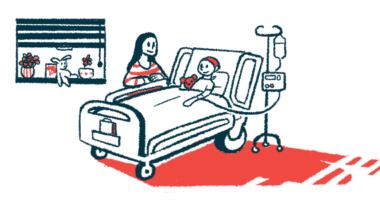The Power of Social Media in the SMA Community

Over the past weekend, pictures from the annual candle lighting for SMA that took place on Aug. 11 inundated my social media feeds. As most of our community knows, this lighting represents the lives lost too soon to this debilitating disease and those who are still living in spite of it. Dark-lit photos with the glow of a small flame each told a story of how we mourned those who were no longer here to share this powerful moment together. They told stories of hope and love and how nothing in all its power, including SMA, could ever break us down. And most importantly, the photos told stories of how we will never lose faith.
I scrolled on my phone, reading each message a person left regarding the candle lighting. It was astounding, and it got me thinking about how social media (and these annual candle lightings) have played such a crucial role in raising awareness and, ultimately, getting us to where we are today in terms of medical breakthroughs and other milestones.
At our recent fundraiser for SMA, my mother took to the podium to share a personal account of SMA, as she does every year. There’s something about her articulate and eloquently written speeches that unequivocally tug on the heartstrings of many. This year’s account wasn’t any different. In it, she journeyed back to the time when I was first diagnosed with SMA. It was April 1991, and when my parents frantically questioned my pediatrician on what exactly SMA was, he didn’t know much. In fact, the most information readily available to him was just two sentences in an old medical journal.
Join the SMA forums and be part of the conversation about Spinraza.
Two sentences.
My parents had no access to Facebook or Twitter or online communities. Heck, there were hardly personal computers in people’s homes at the time. The fate of their 5-month-old little girl was determined by those two sentences and nothing more. I looked around the room as my mother recounted this story, and the glossiness in people’s eyes spoke volumes. My mother’s voice began to crack as she relived the immense pain she and my father felt and how difficult it was to tell their 3-year-old son that his baby sister would only be here for a short while. I even began to get emotional because I couldn’t fathom that kind of heartbreak.
If only, I thought as I scrolled through social media after the lighting and recalled my mother’s speech. If only my parents had started their journey with SMA today. They would have known what an incredibly fulfilling, albeit tumultuous, life their daughter would be capable of. They would have access to an abundance of information. They would have access to life-changing treatments and trials. And most of all, they would have access to the most remarkable online community who are all in it to help and support one another.
SMA is no longer two sentences in a medical journal. It is a culmination of trials and triumphs shared by thousands of people who weren’t afraid to show up and get vulnerable in their communities and on the internet for the sake of helping others. The candle lightings and Facebook posts and everyday movements bring the realities of this disease to light. And it is in large part because of all these people that we are living in a more promising world.
Thank you.
***
Note: SMA News Today is strictly a news and information website about the disease. It does not provide medical advice, diagnosis, or treatment. This content is not intended to be a substitute for professional medical advice, diagnosis, or treatment. Always seek the advice of your physician or other qualified health provider with any questions you may have regarding a medical condition. Never disregard professional medical advice or delay in seeking it because of something you have read on this website. The opinions expressed in this column are not those of SMA News Today, or its parent company, BioNews Services, and are intended to spark discussion about issues pertaining to spinal muscular atrophy.









Comments